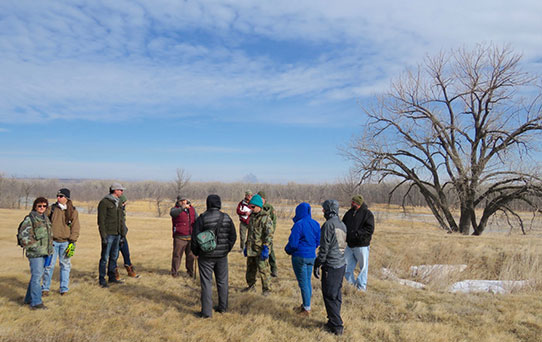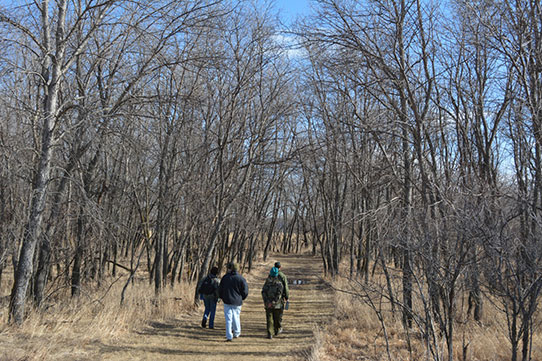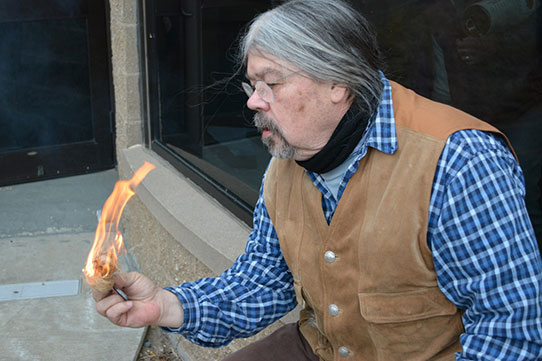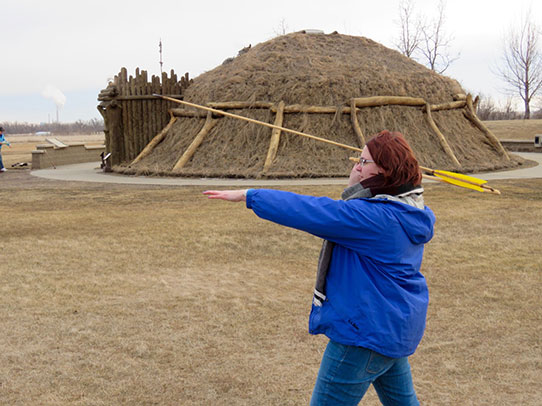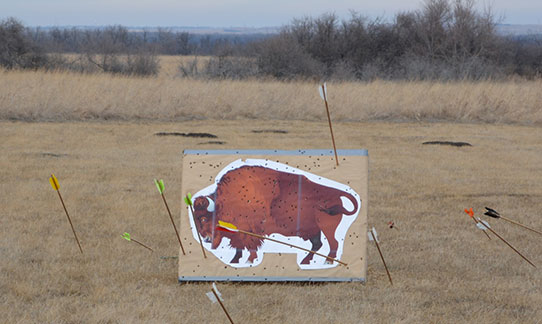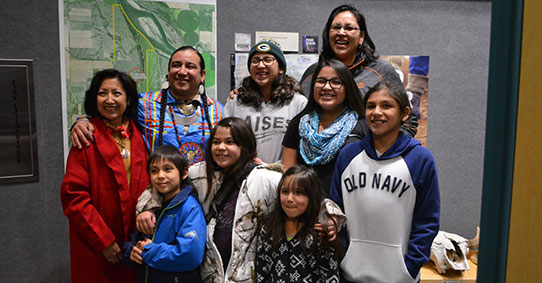The Off-Season
I get asked on a fairly regular basis what I do in the “off-season” at the mansion without all the summer tourists. This question always gets me a little riled up, mostly because I don’t have an off-season. We experience slower times, but we are never “off.” It may surprise you to learn that our largest audience does not consist of tourists. General visitation (our term for spontaneous visits during regular hours) only adds up to about a third of all the people that visit over the course of the year. In 2016, 6,400 people visited, and about 2,000 of those were general visits. The rest are people mostly from the Bismarck-Mandan community who come for events and private rentals, as well as a few school groups.
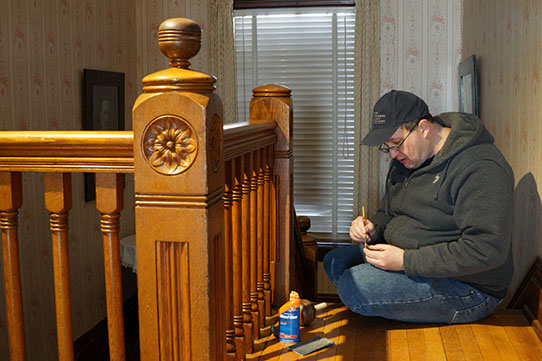
Site supervisor Johnathan Campbell repairing a detached banister finial. This finial has been reattached many times over the years. As people come around the corner they tend to pull on it.
So what do I do when it’s slow, and there are no people around? I clean and fix the wear and tear from all the hands on walls and feet on floors. Many people may not think of the mansion as a home, but that was its primary role for around 80 years, and that is what we preserve. Imagine what your home would look like after having a few thousand people come through it over the course of a year. Then envision having 10,000 fingers rubbing across your oak banister, and 1,000 kids using your bathroom. I’m guessing you wouldn’t let anyone touch the furniture, and you might wish you could lock the doors for a bit just so you could have a slow day or two (maybe three!) to clean. So if you come to the mansion and find the occasional speck of dirt on the floor or paint-chipped doors, please take it as a sign that the state’s historic governors’ home is well-loved by the community.
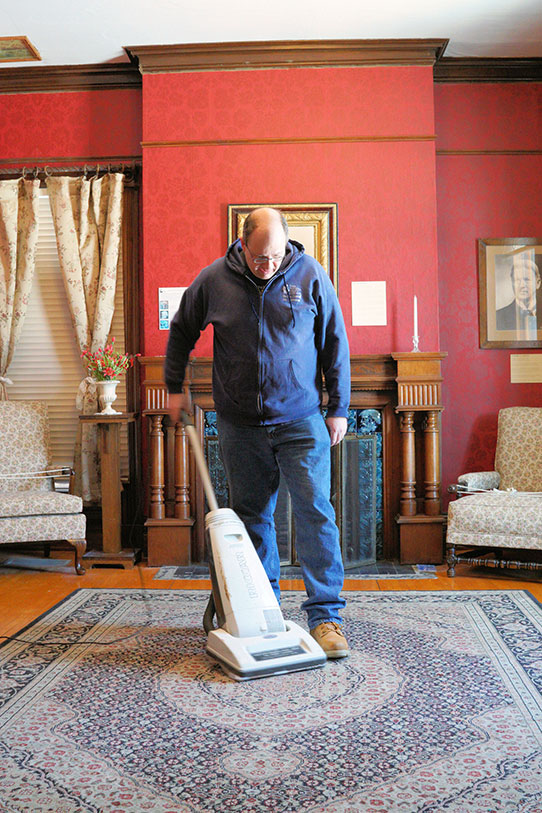
Site supervisor Johnathan Campbell vacuuming dirt and melted ice from the hundreds of feet that have walked here since winter started.
And when I do get caught up on cleaning and maintenance, I go back to figuring out ways to get more people into the house so I can do it some more!
Guest Blogger: Johnathan Campbell
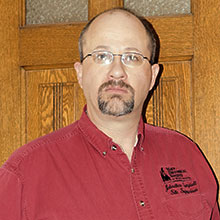 Johnathan Campbell has been around the SHSND for around a quarter of a century. He has been the site supervisor for both the Former Governors’ Mansion, and Camp Hancock State Historic Sites for over a decade, and previous to that was the fossil preparator for the North Dakota State Fossil collection.
Johnathan Campbell has been around the SHSND for around a quarter of a century. He has been the site supervisor for both the Former Governors’ Mansion, and Camp Hancock State Historic Sites for over a decade, and previous to that was the fossil preparator for the North Dakota State Fossil collection.



